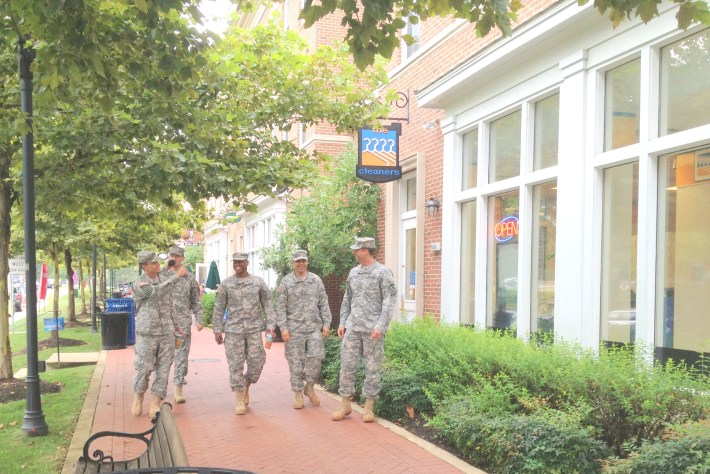The U.S. military probably may not be the first institution that comes to mind when you think smart growth and sustainable planning, but it has embraced these practices wholeheartedly. Last year, the military adopted a whole new rulebook on master planning. And now, those rules are about to become law.

Over the summer, Rep. Earl Blumenauer (D-OR) inserted an amendment [PDF] into the National Defense Authorization Act requiring bases to consider compact, infill development that preserves land and considers life-cycle costs in their master planning. The plans should also consider growth boundaries, expand transit options, and create connections to off-base transit systems.
The House passed the bill on Thursday with the amendment included.
Last month, Sen. Brian Schatz (D-HI) introduced an almost-identical amendment [PDF] into the Senate version of the NDAA. Schatz’s amendment removes Blumenauer’s language about “healthy communities with a focus on walking, running and biking infrastructure, pedestrian and cycling plans, and community green and garden space” -- strange, because Schatz is also a solid advocate for walking and biking. It also removes Blumenauer’s language about vertical building and energy and water conservation.
Perhaps those changes are what it took to get Republican Johnny Isakson of Georgia to co-sponsor the measure. The core requirements to build in a more compact way, with transit, are preserved.
“My amendment will provide smarter and more sustainable development at our military bases that will reduce long-term costs and help to preserve Hawai’i’s unique ecosystems,” Sen. Schatz said in a statement. “Smart, sustainable development can help the Department of Defense achieve long-term cost-savings while promoting military readiness.”
Such a measure is particularly significant in Hawaii. Joint Base Pearl Harbor-Hickam is located just outside Honolulu, a city with tremendous congestion. The rail transit system currently being constructed is expected to help address that problem, and the new law will push the base to take full advantage of a nearby rail stop by building good connections to it and locating more jobs near it. Schatz’s amendment could make the area more livable, not just for the troops who live and work on base, but also for the surrounding communities.
The amendment has been included in the NDAA bill that the Senate is expected to pass this week, before members leave for the holidays. Though the process has been heated, staffers say the military authorization always passes and this year will be no exception. What’s more, no more amendments are allowed, guaranteeing that the smart growth amendment will become law. The Senate can’t make changes to the bill, because that would require a conference session with the House, and the House is already out of session.
The requirement to use smart growth planning tools for bases strengthens internal military rules enacted in 2012. Earlier this year, a military judge declared that the new rules were, in fact, mandatory. But they could still be revoked by a different administration. Codifying the new approach in legislation, passed by Congress, gives it greater permanence.





